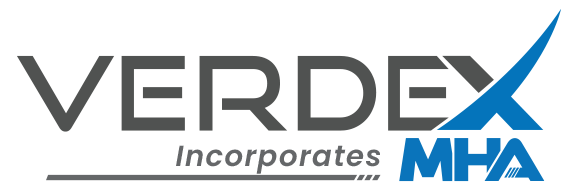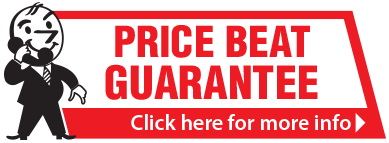Common Workplace Safety Hazards and How to Prevent Them?
Date Posted:16 August 2024
Preventing workplace hazards requires a proactive approach and a commitment to safety from all levels of the organisation. By identifying common hazards and implementing effective prevention strategies, businesses can create a safer, more productive work.
From bustling construction sites to serene office spaces, every workplace has its unique set of hazards. While the nature of risks may vary, the importance of identifying and mitigating these dangers remains constant. A safe workplace is not just a regulatory requirement but a fundamental aspect of a productive and happy workforce. Let’s dive into some common workplace safety hazards and explore effective strategies to prevent them.
1. Slips, Trips, and Falls
Hazard: One of the most prevalent workplace accidents, slips, trips, and falls can occur in any environment. Wet floors, uneven surfaces, poor lighting, and cluttered walkways are common culprits.
Prevention:
- Housekeeping: Maintain a clean and tidy workspace. Ensure walkways are free of obstacles and spills are cleaned up immediately.
- Signage: Use clear and visible signage to indicate wet floors or other temporary hazards.
- Flooring: Install non-slip mats in areas prone to wetness, such as entrances and kitchen areas.
- Lighting: Ensure adequate lighting in all areas, particularly in stairwells and corridors.
2. Ergonomic Hazards
Hazard: Ergonomic hazards arise from repetitive motions, improper workstation setups, and prolonged static postures. These can lead to musculoskeletal disorders (MSDs), affecting muscles, nerves, and tendons.
Prevention:
- Workstation Design: Ensure workstations are ergonomically designed. Chairs should provide proper support, and monitors should be at eye level.
- Training: Provide training on proper lifting techniques and posture. Encourage employees to take regular breaks to stretch and move around.
- Equipment: Invest in ergonomic equipment such as adjustable chairs, sit-stand desks, and supportive accessories like footrests and wrist supports.
3. Electrical Hazards
Hazard: Electrical hazards, including shocks, burns, and fires, can result from faulty wiring, overloaded circuits, and improper use of electrical equipment.
Prevention:
- Regular Inspections: Conduct regular inspections of electrical systems and equipment to identify and rectify issues.
- Training: Ensure employees are trained in the safe use of electrical equipment and are aware of the dangers of overloading circuits.
- Maintenance: Implement a schedule for routine maintenance and repairs of electrical installations.
4. Hazardous Substances
Hazard: Exposure to hazardous substances, such as chemicals, dust, and fumes, can lead to serious health issues, including respiratory problems and chemical burns.
Prevention:
- Proper Storage: Store hazardous substances in appropriate, labelled containers and secure storage areas.
- PPE: Provide personal protective equipment (PPE) such as gloves, masks, and eye protection to employees handling hazardous materials.
- Ventilation: Ensure proper ventilation in areas where hazardous substances are used to reduce exposure.
5. Machinery and Equipment Hazards
Hazard: Accidents involving machinery and equipment can cause severe injuries, including cuts, amputations, and crush injuries.
Prevention:
- Guarding: Install safety guards on all machinery to prevent accidental contact with moving parts.
- Training: Provide comprehensive training on the safe operation of machinery and equipment.
- Maintenance: Conduct regular maintenance to ensure machinery and equipment are in good working condition.
6. Fire Hazards
Hazard: Fires can cause catastrophic damage and pose a significant threat to life. Common causes include faulty electrical equipment, flammable materials, and human error.
Prevention:
- Fire Safety Plan: Develop and implement a fire safety plan, including evacuation procedures and designated assembly points.
- Fire Extinguishers: Ensure fire extinguishers are readily available and that employees are trained in their use.
- Regular Drills: Conduct regular fire drills to ensure employees are familiar with evacuation routes and procedures.
7. Stress and Mental Health
Hazard: High-stress levels and poor mental health can lead to reduced productivity, increased absenteeism, and higher turnover rates.
Prevention:
- Support Programs: Implement employee assistance programs (EAPs) that provide support and resources for mental health.
- Work-Life Balance: Encourage a healthy work-life balance by promoting flexible working hours and regular breaks.
- Open Communication: Foster an open and supportive workplace culture where employees feel comfortable discussing stress and mental health issues.
Preventing workplace hazards requires a proactive approach and a commitment to safety from all levels of the organisation. By identifying common hazards and implementing effective prevention strategies, businesses can create a safer, more productive work environment.




























































































































 Trolleys & Hand Trucks
Trolleys & Hand Trucks Cage Trolleys
Cage Trolleys Cleaning Carts & Trolleys
Cleaning Carts & Trolleys Construction Trolleys
Construction Trolleys Hand Trucks & Dollies
Hand Trucks & Dollies Laundry/Linen Trolleys
Laundry/Linen Trolleys Lifting Trolleys
Lifting Trolleys Order Picking Trolleys
Order Picking Trolleys Panel Cart Trolleys
Panel Cart Trolleys Platform Trolleys
Platform Trolleys Powered Trolleys
Powered Trolleys Shelf & Tiered Trolleys
Shelf & Tiered Trolleys Stainless Steel Trolleys
Stainless Steel Trolleys Tool Trolleys
Tool Trolleys Utility & Service Carts
Utility & Service Carts Lifting & Handling Equipment
Lifting & Handling Equipment Forklift Attachments
Forklift Attachments Jib Attachments
Jib Attachments Lifting Hoists & Pallet Hooks
Lifting Hoists & Pallet Hooks Load Skates & Tow Tugs
Load Skates & Tow Tugs Manual Stackers & Lifters
Manual Stackers & Lifters Pallet Jacks
Pallet Jacks Pallet Lifters
Pallet Lifters Pallet Rotators & Dispenser
Pallet Rotators & Dispenser Powered Pallet Trucks & Electric Lifters
Powered Pallet Trucks & Electric Lifters Scissor Lift Trolleys and Tables
Scissor Lift Trolleys and Tables Conveyor Equipment
Conveyor Equipment Conveyor Frames & Stands
Conveyor Frames & Stands Roller & Skate Conveyors
Roller & Skate Conveyors Ladders & Access Equipment
Ladders & Access Equipment Container & Yard Ramps
Container & Yard Ramps Ladders & Step Stools
Ladders & Step Stools Work Platforms & Crane Cages
Work Platforms & Crane Cages Drum Handling Equipment
Drum Handling Equipment Drum Storage & Bunding
Drum Storage & Bunding Drum Trolleys & Lifters
Drum Trolleys & Lifters Forklift Drum Handling
Forklift Drum Handling Dangerous Goods Storage & Spillage
Dangerous Goods Storage & Spillage Aerosol Cans Storage Cages
Aerosol Cans Storage Cages Bunded Pallets & Storage
Bunded Pallets & Storage Corrosive Goods Storage Cabinets
Corrosive Goods Storage Cabinets DG Storage & Trolleys
DG Storage & Trolleys Flammable Liquid Cabinets
Flammable Liquid Cabinets Forklift Gas Storage Cages
Forklift Gas Storage Cages Site Storage
Site Storage Spill Kits
Spill Kits Waste Handling & Bins
Waste Handling & Bins Bin Lifters & Tippers
Bin Lifters & Tippers Plastic Waste & Wheelie Bins
Plastic Waste & Wheelie Bins Steel Waste & Tipping Bins
Steel Waste & Tipping Bins Waste Carts
Waste Carts Shelving & Storage Equipment
Shelving & Storage Equipment Heavy Duty Cabinets
Heavy Duty Cabinets Heavy Duty Shelving
Heavy Duty Shelving Mega Bins & Pallets
Mega Bins & Pallets Packing & Workbenches
Packing & Workbenches Pallet Racking Accessories
Pallet Racking Accessories Parts Trays & Stor-Pak Bins
Parts Trays & Stor-Pak Bins Pegboard & Louvre Panels
Pegboard & Louvre Panels Plastic Bins & Crates
Plastic Bins & Crates Plastic Handling Solutions Bins
Plastic Handling Solutions Bins Plastic Pallets
Plastic Pallets Stack & Nest Bins
Stack & Nest Bins Stillage & Transport Cages
Stillage & Transport Cages Workplace Equipment
Workplace Equipment Modular Workbenches
Modular Workbenches Electric Height-Adjustable Workbenches
Electric Height-Adjustable Workbenches Floor Matting
Floor Matting General Workplace Equipment
General Workplace Equipment Industrial Weighing Scales
Industrial Weighing Scales Packaging Machinery
Packaging Machinery Stationery Cupboards
Stationery Cupboards Storage and Stillage Cages
Storage and Stillage Cages Tool Trolleys
Tool Trolleys Tooling Cabinets
Tooling Cabinets Safety Barriers, PPE & Signage
Safety Barriers, PPE & Signage Barriers & Bollards
Barriers & Bollards First Aid Equipment
First Aid Equipment Gloves, Knives and PPE
Gloves, Knives and PPE Signage
Signage Cleaning & Site Supplies
Cleaning & Site Supplies Cleaning Equipment
Cleaning Equipment Cleaning Trolleys
Cleaning Trolleys Rubbish Bins
Rubbish Bins Signs & Traffic Supplies
Signs & Traffic Supplies Construction Equipment
Construction Equipment Construction Trolleys
Construction Trolleys Waste Handling
Waste Handling General Site Equipment
General Site Equipment Concrete Equipment
Concrete Equipment Site Storage
Site Storage Lifting Equipment
Lifting Equipment Verdex Specials
Verdex Specials











